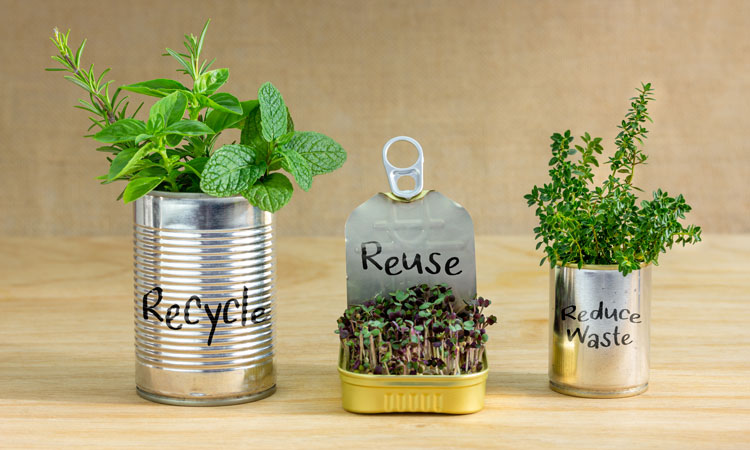Ingredient upcycling
- Like
- Digg
- Del
- Tumblr
- VKontakte
- Buffer
- Love This
- Odnoklassniki
- Meneame
- Blogger
- Amazon
- Yahoo Mail
- Gmail
- AOL
- Newsvine
- HackerNews
- Evernote
- MySpace
- Mail.ru
- Viadeo
- Line
- Comments
- Yummly
- SMS
- Viber
- Telegram
- Subscribe
- Skype
- Facebook Messenger
- Kakao
- LiveJournal
- Yammer
- Edgar
- Fintel
- Mix
- Instapaper
- Copy Link
Posted: 19 August 2021 | Jaclyn Bowen | No comments yet
Jaclyn Bowen explains how some food manufacturers are saving money and the environment through ingredient upcycling.


The Food and Agriculture Organization of the United Nations’ (FAO) assessment of global food losses and waste estimated that each year, one-third of all food produced in the world for human consumption never reached the consumer’s table. This not only means a missed opportunity for the economy and food security, but also a waste of all the natural resources used for growing, processing, packaging, transporting and marketing the food. In fact, the World Resources Institute estimates that if food waste was a country, it would be the third largest greenhouse gas-emitting country in the world.
However, a new food trend is poised to change the status quo, affording food manufacturers an avenue with which to save money on ingredient sourcing and food marketers a means to communicate their food waste diversion efforts to consumers, all while reducing greenhouse gas emissions. Identified by Whole Foods Market as a Top Ten 2021 Hot Food Trend, upcycling isn’t a passing fad – it’s a movement and it’s here to stay.
What is upcycling?
According to the Upcycled Food Association, upcycled foods use ingredients that would not otherwise have been consumed, are procured and produced using verifiable supply chains, and have a positive impact on the environment. The definition was created in 2020 after a task force (including ReFed, the National Resources Defense Council, Harvard Law School Food Law, and others) came together to provide a definition of the term for use in policy, research and more.
The mission of the upcycled foods sector is to reduce food loss and waste, thereby decreasing the negative impact on the environment of overproduction and waste while increasing access to safe, sustainable food sources for people around the world. According to the FAO, the annual market value of food that is lost or wasted globally is approximately $940 billion. Despite this surplus of food, over 820 million people around the world are undernourished, and one in nine suffer food insecurity and hunger. According to ReFed, in the US alone, food waste amounts to 35 to 103 million tons of food, with an estimated total loss of around 62.5 million tons annually. Of that amount, 52.4 million tons ends up in landfills or incinerators and 10.1 million tons are lost as on-farm waste. The Upcycled Food Association views upcycling as part of the solution to this food waste problem.
The concept of upcycling is simple; it’s about doing more with less and elevating all food to its highest and best use. Food waste can accumulate at any stage in the food production supply chain. For example, some fruits and vegetables that fail to meet certain aesthetic standards to be sold at retail, end up getting composted, tilled into the ground, or sold as livestock feed. Other fruits and vegetables may be peeled (like an orange or a potato) with the peel destined for landfill. With upcycling, that same peel can be used as a citrus essence in a cosmetic product or the potato peel as an ingredient in a companion animal pet food.
These ‘waste’ materials still possess nutrients and calories and rather than be considered as rubbish, they should be deemed as ‘ingredients’ to be utilised in other finished products.
A new upcycled certification programme
In mid-2020, the Upcycled Food Association convened a global group of academics, retailers, industry agents, and consumer advocates to spearhead the Upcycled Food Association Standards Committee. In January 2021, the association announced the publication of the Upcycled Certification Standard and has recently teamed up with a third-party verification company – Where Food Comes From – to offer Upcycled certification (the first of its kind).
The purpose of the Upcycled Certification Standard is to:
- Communicate to consumers a consistent message regarding the criteria for and value of these upcycled products
- Create a common identity for the upcycling movement
- Serve to communicate transparency, aiming to build trust and enthusiasm about consuming food that would have otherwise been lost or wasted.
Key requirements of the programme include:
- That a certified product containing upcycled ingredients (PUI) shall contain greater than or equal to 10 percent upcycled ingredients by weight OR meet or exceed an established threshold for total tonnage of inputs diverted based on production records over the previous year
- The ability to supply chain of custody documentation, proof of food safety, an affidavit attesting to the origin of upcycled material and original waste destination, traceability, in-out balance, and training
- Making a public declaration on commitment to food waste diversion
- Agreeing to the potential of an unannounced audit
- Answering certain information-only questions about greenhouse gas emission-accounting efforts.
The standard also allows for ingredient suppliers offering upcycled ingredients (UI) for sale to become certified in order to create a toolbox for brands interested in formulating products using upcycled ingredients. In an effort to celebrate all ingredients that have been diverted, even in instances where brands may not meet the necessary percentage inclusion or diversion thresholds, a less than PUI clause is included. This offers brands the opportunity to be certified while limiting their marketing messaging to the back of pack.
Finished product manufacturers certified as meeting the requirements of the standard are able to include the certification seal on pack.
Tips for those considering upcycling
Complete a waste inventory
Walk through your facility and make a list of all potential waste channels. This can include excess incoming raw material, excess product, product put on a quality or quarantine hold for being outside of specifications (don’t forget it must still be compliant from a food safety perspective), and by-products of your production practices.
Don’t just think this applies to finished food products
If your facility creates a finished product, explore whether a by-product of your production system can be utilised in another brand’s finished product. Leading upcycled food brand, ReGrained, uses spent grains from the brewing industry as an ingredient in their snack bars, for example.
Remember to consider the inconsistency that is waste
When formulating with upcycled ingredients, anticipating supply can be both a science and an artform. Anticipating on-farm food waste requires consideration of the potential for a bountiful harvest or a limited yield. Anticipating production facility waste can sometimes be a bit more predictable (eg, a production run is every Thursday with a certain number of estimated pounds of waste by-product per production run). In either case, the onus is on the receiving brand to anticipate the quantity of potential upcycled ingredient available.
You have time
The partnership between the Upcycled Food Association and Where Food Comes From is still in its infancy, so you have plenty of time to get involved.
Check out the Upcycled Food Association website
The Upcycled Food Association website contains a wealth of information for consumers, retailers and industry alike. Whether it’s statistics, overview presentations or details on the standard you’re after, it’s worth taking a look.
As the old proverb goes: one man’s trash can be another man’s treasure.
About the author
Jaclyn Bowen MPH, MS is the Executive Director of Clean Label Project and a food safety and quality systems engineer. Prior to coming to Clean Label Project, she spent 15 years at the World Health Organization Collaborating Centre and NSF International, and worked on the creation and enforcement of food safety and water quality standards and compliance systems.
Related topics
Food Waste, Ingredients, New product development (NPD), Sustainability









